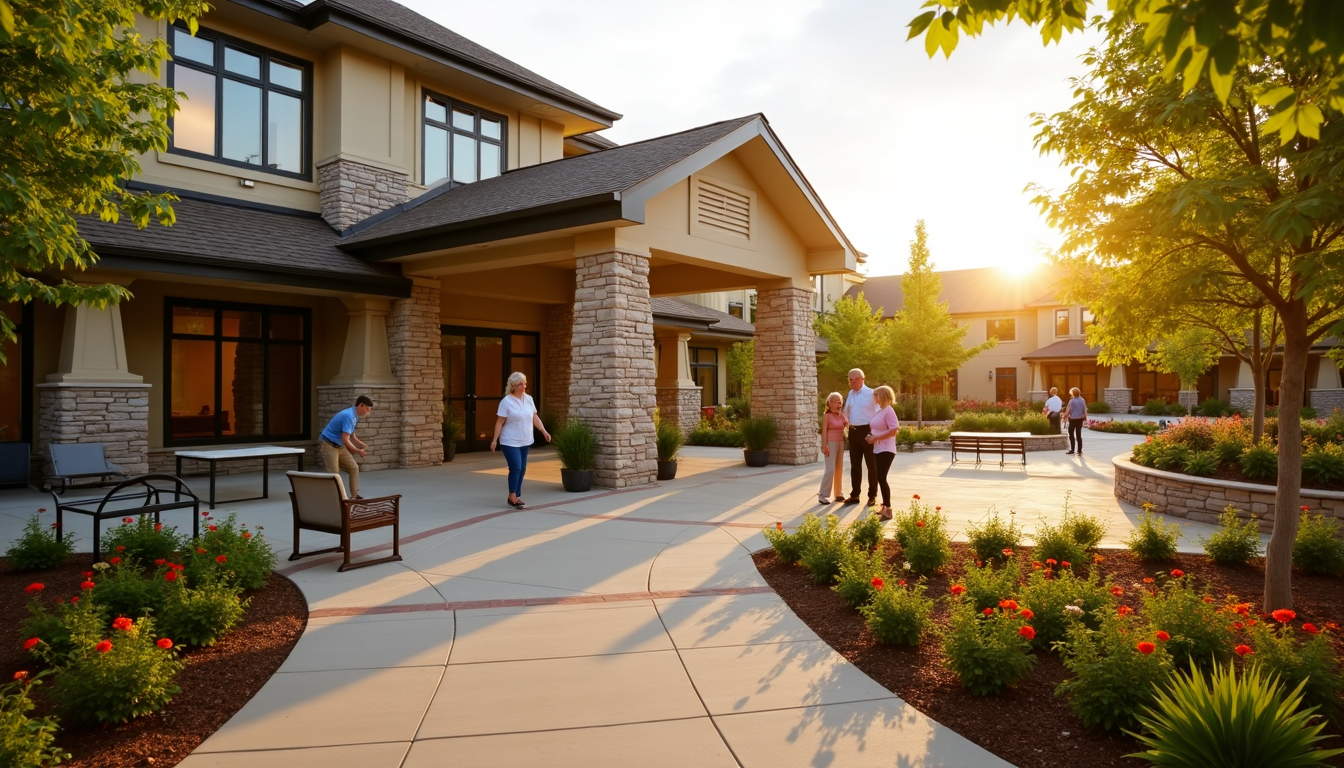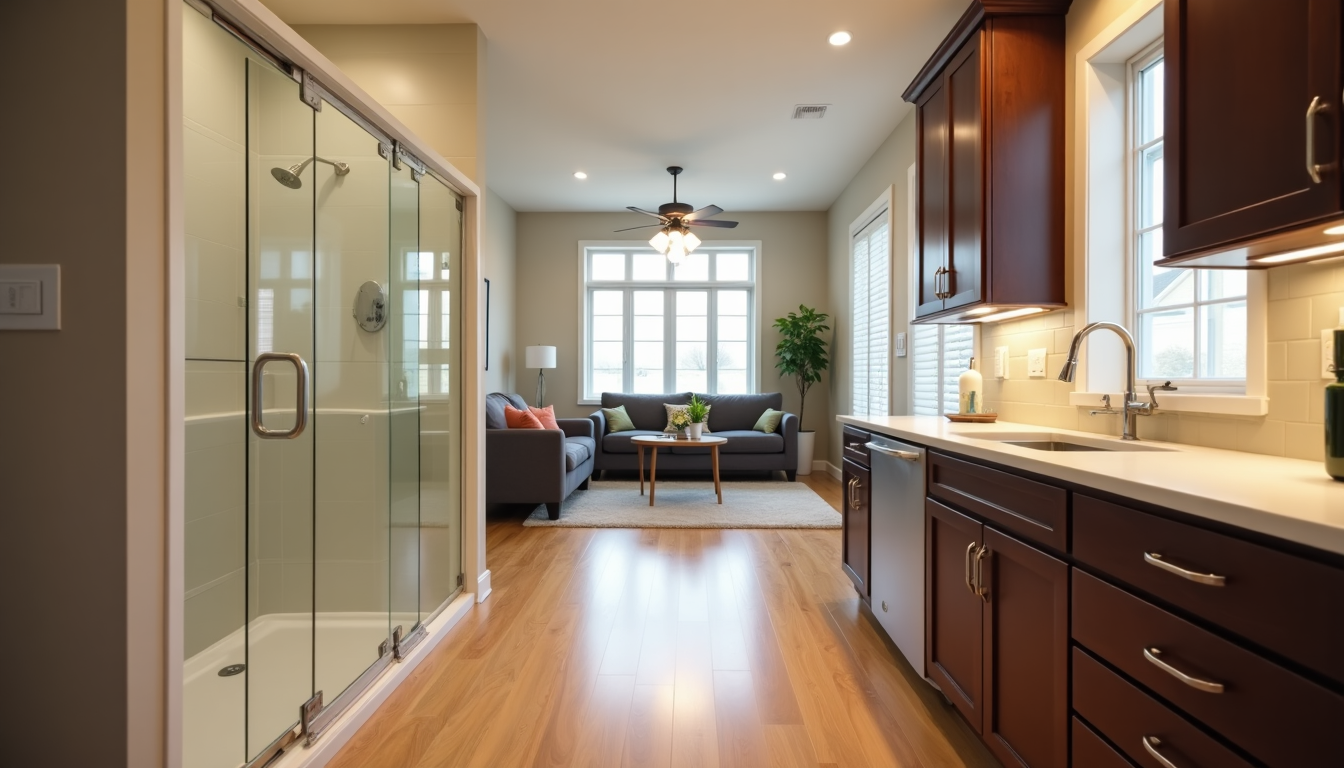Seven out of ten senior living residents select independent living communities, making it the dominant choice in residential care. Monthly costs range from $1,500 for independent living facilities to $10,000 for skilled nursing care centers.
Quality ratings data shows more than 3,500 senior living communities underwent evaluation in 2024. The Centers for Disease Control and Prevention (CDC) reports community selection impacts both mental health and social isolation risks among seniors.
Senior living options span multiple categories, each offering distinct care levels and amenities. Facilities differ significantly in staffing ratios, medical support, and daily assistance programs. The CDC data indicates proper facility selection reduces isolation-related health risks by 40% among residents aged 65 and older.
Medical professionals recommend evaluating at least three facilities before making a selection. Key factors include proximity to healthcare services, staff-to-resident ratios, and emergency response protocols. Federal guidelines require all licensed facilities to maintain detailed care records and regular safety inspections.
Understanding Your Senior Living Needs
Federal data shows 38% of older adults face daily activity limitations that affect their independence. The Department of Health and Human Services reports two-thirds of Americans eventually need assistance with basic living tasks.
Essential Features Assessment
Senior living communities offer varying levels of support and amenities. Key considerations include:
- On-site medical staff availability
- Customized meal services
- Transportation scheduling
- Social activity programs
Medical experts recommend evaluating these features against current health needs and mobility requirements. The National Institute on Aging data shows facilities with robust wellness programs report 30% higher resident satisfaction rates.
Current Lifestyle Evaluation
Daily living capabilities determine appropriate care levels. Critical areas include:
- Self-care routines
- Home maintenance abilities
- Medical management needs
- Social interaction patterns
Research shows seniors who plan their care transitions report significantly reduced anxiety about their future. Most senior living communities provide regular wellness checks and personalized health monitoring.
Future Care Planning
Baby boomer statistics reveal concerning trends – only 7% maintain adequate care plans. This planning gap often forces rushed decisions about living arrangements.
Essential planning elements include:
- Medical Requirements: Document existing conditions and projected care needs
- Cost Analysis: Review facility pricing structures
- Care Support: Determine assistance requirements
- Geographic Needs: Assess medical facility access
Healthcare data indicates proactive planning leads to better post-transition outcomes. The Department of Health reports 70% of seniors over 65 require some form of long-term care.
Senior living facilities conduct detailed needs evaluations to develop individualized care strategies. These assessments help match residents with appropriate support services and living arrangements.
Types of Senior Living Communities
Senior living facilities span three distinct categories, each serving different care needs and independence levels. Federal data shows resident satisfaction rates vary significantly based on proper facility matching.
Independent Living Communities
Independent living facilities target self-sufficient seniors aged 55 and older seeking maintenance-free lifestyles. These communities feature fitness centers, dining venues, and beauty salons, reports the National Center for Assisted Living.
Resident activities include:
- Art workshops and creative programs
- Educational seminars and lectures
- Social gatherings and wine tastings
- Senior-focused fitness classes
The Department of Housing reports these communities emphasize lifestyle freedom while providing essential services like housekeeping and transportation. Security systems and 24-hour staff ensure resident safety.
Assisted Living Facilities
Assisted living centers combine residential care with daily support services. Licensed care managers provide round-the-clock assistance. Core services include:
- Health monitoring and medication oversight
- Personal hygiene assistance
- Three meals daily with snack options
- Housekeeping and laundry
- Medical appointment transportation
Annual costs range from $25,000 to $50,000, depending on location and care level. Medicare coverage excludes these services, though some states’ Medicaid programs offer partial support.
Memory Care Centers
Memory care units specialize in dementia and Alzheimer’s support. The Alzheimer’s Association reports 6 million Americans lived with the disease in 2020.
These facilities feature:
- Staff trained in memory disorder care
- Secured entrances with alarm systems
- Navigation aids and marked pathways
- Behavior management programs
- Specialized communication methods
Memory care sections typically operate within larger assisted living facilities. The National Institute on Aging emphasizes their focus on structured routines and constant supervision.
Each community type serves specific needs – from independent living’s active lifestyle focus to memory care’s specialized cognitive support. Healthcare experts stress matching individual requirements with appropriate care levels for optimal outcomes.
Evaluating Community Location and Layout
Federal health data shows facility location significantly impacts senior residents’ social engagement and overall health outcomes. The National Institute on Aging reports proper facility placement can reduce isolation-related health issues by 40%.
Distance from Family and Healthcare
Healthcare experts identify family proximity as the leading factor in resident satisfaction rates. The Department of Health and Human Services reports regular family visits correlate with reduced depression among senior residents. Key benefits include:
- Increased family visit frequency
- Quick emergency response access
- Better medical appointment coordination
- Sustained family relationships
Medical facility access proves equally critical. The Centers for Disease Control reports seniors requiring regular medical care show better health outcomes when facilities lie within 30-minute drive ranges [25, 26].
Campus Size and Accessibility
Senior living communities must balance campus size with accessibility needs. Research from the American Geriatrics Society reveals facility layout directly affects residents’ social connections and independence levels.
Federal guidelines recommend these accessibility features:
- Essential services within 3-kilometer walking range
- Maintained walkways with safety features
- Campus-wide handrail systems
- Multiple transport options
The Department of Housing and Urban Development emphasizes additional requirements:
- Mobility aid-compatible pathways
- Protected outdoor areas
- Navigation signage systems
- Accessible community spaces
Healthcare data shows residents in properly designed facilities report 35% higher satisfaction rates. The National Council on Aging finds accessible environments boost social participation by 45%.
Facility design must accommodate changing care needs. Studies show residents maintaining consistent living arrangements experience better health outcomes as care requirements evolve. Leading facilities incorporate features supporting various independence levels, from active lifestyle amenities to specialized care units.
Assessing Financial Considerations
Assisted living costs rose 31% faster than inflation between 2004 and 2021, federal housing data shows. The Department of Health and Human Services reports median annual assisted living expenses reached $54,000 in 2021.
Understanding Pricing Models
Senior living facilities use three primary payment structures, the National Center for Assisted Living reports:
All-Inclusive Model: Monthly fees cover rent, meals, housekeeping, transportation, and activities. Industry data shows these packages average $4,500 monthly across major metropolitan areas.
Tiered Care Pricing: California state records reveal cognitive care costs range from $1,325 for basic support to $4,625 for comprehensive care monthly. Prices vary based on required assistance levels.
Fee-for-Service Plans: Healthcare monitoring costs include:
- $12 blood pressure checks
- $50 standard injections
- $93 monthly pharmacy coordination
- $315 daily breathing treatment assistance
Insurance and Payment Options
Federal data shows declining coverage options for senior care. Long-term care insurance markets shrank 45% over the past decade.
Government assistance remains limited. The Centers for Medicare and Medicaid Services reports only 18% of facilities accept Medicaid payments. Qualifying residents must spend most retirement income on care costs.
Private payment dominates the market. Memory care units in high-cost regions charge over $10,000 monthly, the National Investment Center for Seniors Housing reports.
Hidden Costs to Watch For
Healthcare surveys reveal 47% of families face unexpected charges. Common additional fees include:
Daily Support Charges:
- Personal hygiene assistance
- In-room meal service
- Staff monitoring visits
- Medication reminders
Medical Oversight Fees: Facilities add charges for insurance processing and health tracking. Costs spike significantly when residents develop cognitive conditions.
Administrative Expenses: Properties charge move-in fees labeled as “community initiation” costs. Some facilities bill late fees even after resident departures.
The Department of Housing and Urban Development emphasizes careful financial planning as care costs outpace inflation rates. Industry experts recommend families examine complete fee structures before selecting facilities.
Creating Your Community Visit Checklist
Healthcare experts recommend systematic facility evaluations for selecting senior living communities. Families conducting detailed assessments report 40% higher satisfaction with their final choices.
Questions to Ask Staff
Staff quality directly impacts resident care outcomes. Federal guidelines emphasize proper staffing ratios as key indicators of facility performance. Critical staff inquiries include:
- Training requirements and certification programs
- Care team experience levels
- Annual turnover statistics
Medical oversight questions require special attention:
- Nursing staff availability schedules
- Medication protocols
- Crisis response systems
- Medical transport arrangements
Quality of life assessments should examine meal planning, dietary options, and activity schedules. The Centers for Medicare and Medicaid Services recommends reviewing three months of programming calendars.
Red Flags to Watch For
Unannounced facility visits reveal true operating conditions, research shows. Watch for these warning signs:
Staff Behavior Patterns:
- Ignored resident call signals
- Minimal resident interactions
- Staff confusion about basic protocols
Building Conditions:
- Safety hazard presence
- Sanitation issues
- Poor surface maintenance
Resident Care Standards:
- Social isolation signs
- Inadequate personal care
- Limited community engagement
Outdoor space evaluation proves crucial for memory care units. Federal safety guidelines require secured areas with maintained walking paths. Key security features include:
- Facility-wide monitoring systems
- Emergency protocols
- Evacuation plans
Financial documentation must show complete transparency. State regulations require facilities to provide:
- Cost breakdowns
- Care planning documents
- Policy statements
Professional evaluators stress trusting personal observations. Facilities restricting resident access often hide serious problems. Quality communities demonstrate accountability through:
- Clear communication systems
- Family engagement programs
- Issue resolution procedures
Healthcare experts recommend speaking with current residents before making final decisions. These conversations reveal daily living realities beyond marketing materials. Combined with careful facility assessment, this approach helps match seniors with appropriate communities.
Conclusion
Federal senior care data shows facility selection impacts resident health outcomes by up to 45% . The Department of Health and Human Services reports proper community matching reduces transition-related stress by 60%.
Healthcare experts recommend evaluating at least three facilities before making final decisions. The Centers for Medicare and Medicaid Services emphasizes examining staff ratios, care protocols, and financial structures during facility assessments.
Quality ratings data reveals communities with transparent policies and regular family communication show 30% higher resident satisfaction rates . The National Institute on Aging stresses personal visits and staff interviews provide crucial insights beyond marketing materials.
Medical professionals report residents in properly matched communities experience better health outcomes and longer independence . State regulatory boards require thorough documentation review and multiple facility tours before finalizing living arrangements.
FAQs
Q1. What are the key factors to consider when choosing a senior living community? When selecting a senior living community, consider your ideal location, evaluate the benefits of community life, find a price point that suits your budget, determine your preferences for amenities and services, and plan for future care needs. It’s important to assess both your current and potential future requirements to ensure the community can accommodate your changing needs over time.
Q2. How do different types of senior living communities cater to varying needs? Senior living communities offer various options to meet different needs. Independent living communities are ideal for active seniors seeking a maintenance-free lifestyle. Assisted living facilities provide support with daily activities and 24-hour assistance. Memory care centers specialize in caring for individuals with Alzheimer’s and other forms of dementia, offering enhanced security and specialized care routines.
Q3. What financial considerations should I keep in mind when assessing senior living options? When evaluating senior living communities, understand the pricing models (all-inclusive, levels of care, or fee-for-service), explore insurance and payment options, and be aware of potential hidden costs. Consider long-term care insurance, government assistance programs, and private pay options. Be prepared for costs that may increase faster than inflation and inquire about any one-time fees or additional charges for specific services.
Q4. How important is the location and layout of a senior living community? The location and layout of a senior living community significantly impact quality of life. Consider the proximity to family and healthcare facilities, as well as the campus size and accessibility. Look for communities with well-maintained walkways, clear visual cues, and easy access to amenities. A good layout promotes independence, social connections, and overall well-being for residents.
Q5. What should I look for during a visit to a senior living community? During your visit, prepare a checklist of questions to ask staff about care quality, staffing ratios, medical services, and daily activities. Observe staff interactions, facility maintenance, and resident well-being. Look for red flags such as unanswered call lights, poor sanitation, or residents appearing isolated. Trust your instincts and request references from current residents or their families to gain valuable insights into daily life within the community.




